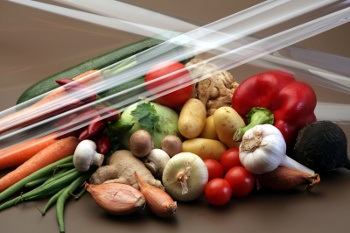Working with Whey
January 18, 2012
As a
child, like most children, I was confused about the
nursery rhyme,
Little Miss Muffet. The rhyme is quite old, having been first published in 1805, so the language is somewhat
archaic.[1]

("Little Miss Muffet," Oil on canvas by John Everett Millais (1829–1896), via Wikimedia Commons))
Specifically, I was confused about two things. Was "tuffet" actually a word for backside? What was the unappetizing concoction, "curds and whey?"
A
tuffet is actually a short footstool.
Curds and
whey are what we now call
cottage cheese, although the present consumer food product has more curds, and less whey. This brings us to an
entrepreneur's moment when we ask about what happens to all that whey. Whey is a byproduct of all
cheesemaking operations, not just those for cottage cheese.
Whey contains about 20% of the
milk protein, nearly all the
milk sugar, and approximately 50% of milk's
nutrient content.[2] The watery whey can be processed to yield a useful protein supplement for both humans and animals. The sugar content of whey allows its
biochemical conversion, by
fermentation, into
ethanol.[3] Much whey is simply sprayed onto fields as
fertilizer. Now, scientists at the
Fraunhofer Institute have developed methods to convert whey into an
environmentally friendly food packaging material.[4]
As a casual stroll through any
supermarket and
pharmacy will show,
polymeric materials are used extensively for food and drug packaging. There are pouches for food, and
blister packs for pills. These polymeric films protect the products from environmental onslaughts of
moisture,
oxygen, and
chemical and
biological contamination. These films are often built through a
lamination of several materials, each good at blocking a particular material from the environment.
Transparency is important, since the
consumer likes to know what she's buying.
Ethylene vinyl alcohol (EVOH)
copolymers are often used as an oxygen barrier material.
Polychlorotrifluoroethylene, trade-named
Aclar®, is often used as a moisture barrier material. The
European Union has a
"Wheylayer" project with a goal of replacing oxygen barrier
petrochemical polymers with whey. The advantages would be lower cost and
biodegradability.[4]
To make a barrier layer from whey, scientists from the
Fraunhofer Institute for Process Engineering and Packaging IVV (Freising, Germany) first purified
sweet whey and
sour whey to produce high purity whey protein isolates. They subsequently tried different modification methods to obtain suitable proteins with excellent film-forming properties. The proteins alone cannot make suitable barrier films, so they needed to add other additives, which were also bio-based.[4]
After some optimization of composition, the Fraunhofer researchers produced an economically viable, industrial-scale method for application of the whey protein coatings to other plastic films to produce multilayer barrier films that are flexible and transparent. There is a
pending patent on this technology.[4]

Food packaging film made from whey, along with the makings for a very tasty stew.
(Fraunhofer Institute Image))
The market for such a product is considerable. It's estimated that
Germany alone will use more than 640
square kilometers of oxygen barrier films of EVOH in 2014.[4] Whey materials may be suitable also as a replacement for EVOH in
thermoformable composites. The
volume of these composites is estimated to be 93,158
tons in 2014, and substitution of whey material will reduce this huge
carbon footprint.[4]
References:
- Little Miss Muffet page on Wikipedia.
- Pavel Jelen, "Industrial whey processing technology: an overview," J. Agric. Food Chem., vol. 27, no. 4 (July 1979), pp 658-661.
- The New Zealand Institute of Chemistry, Chemical Processes in New Zealand, The Manufacture Of Ethanol From Whey.
- Film coatings made from whey, Fraunhofer Institute Press Release, January 2, 2012.
Permanent Link to this article
Linked Keywords: Child; nursery rhyme; Little Miss Muffet; archaic; John Everett Millais; Wikimedia Commons; tuffet; curds; whey; cottage cheese; entrepreneur; cheesemaking; milk protein; lactose; milk sugar; nutrient; biochemical; fermentation; ethanol; fertilizer; Fraunhofer Society; Fraunhofer Institute; environmentally friendly; food packaging; supermarket; pharmacy; polymer; polymeric material; blister pack; moisture; oxygen; chemical; biological; laminate; lamination; transparency; consumer; Ethylene vinyl alcohol; copolymer; Polychlorotrifluoroethylene; Aclar®; European Union; "Wheylayer" project; petrochemical; biodegradation; biodegradability; Fraunhofer Institute for Process Engineering and Packaging IVV (Freising, Germany); sweet whey; sour whey; pending patent; Germany; square kilometer; thermoformable; composite; volume; ton; carbon footprint.